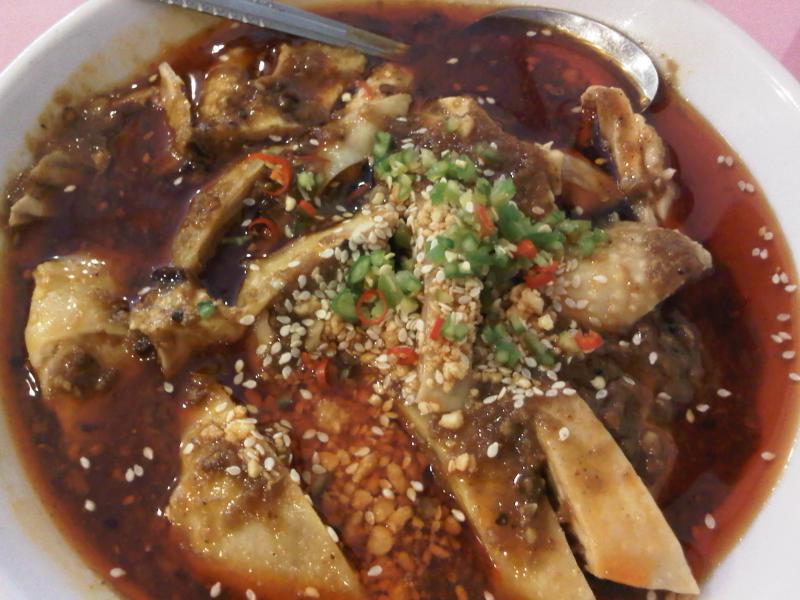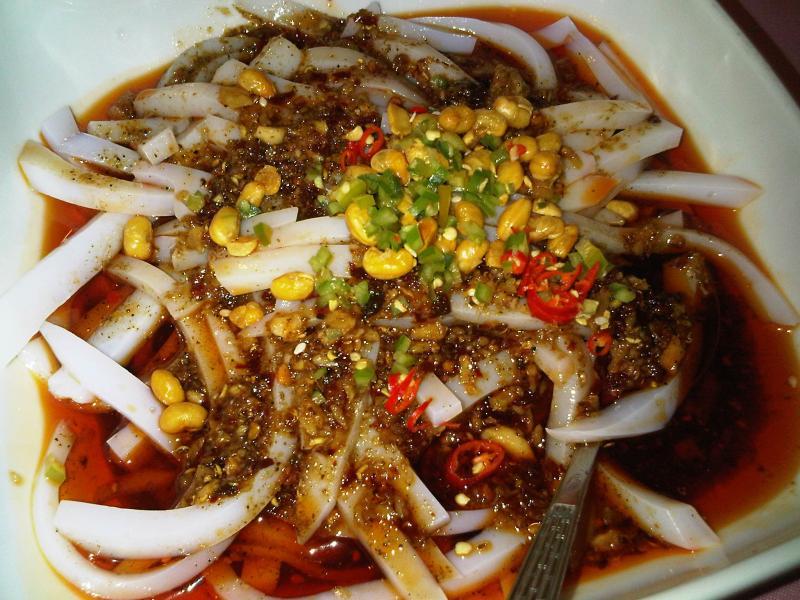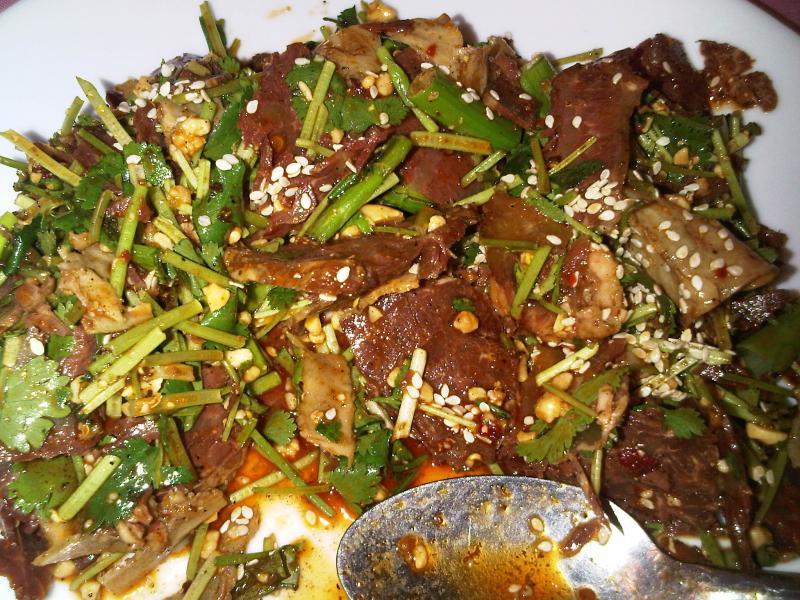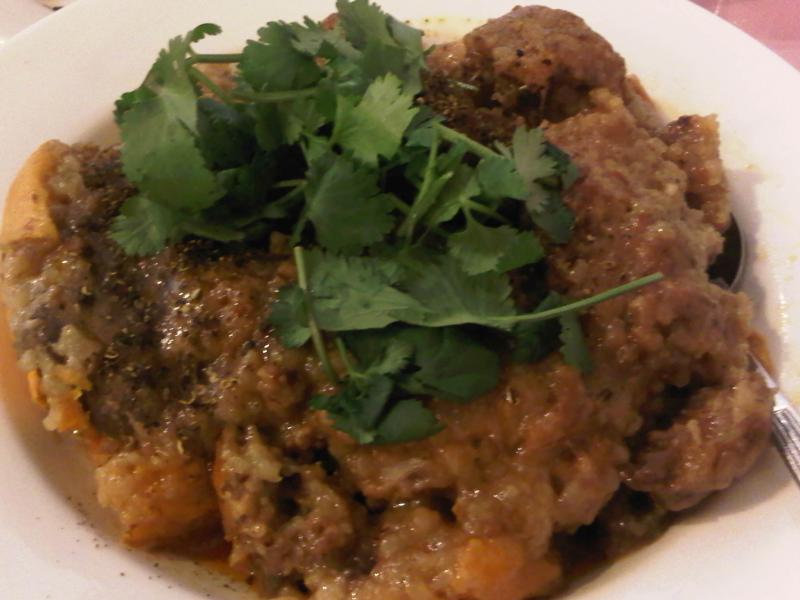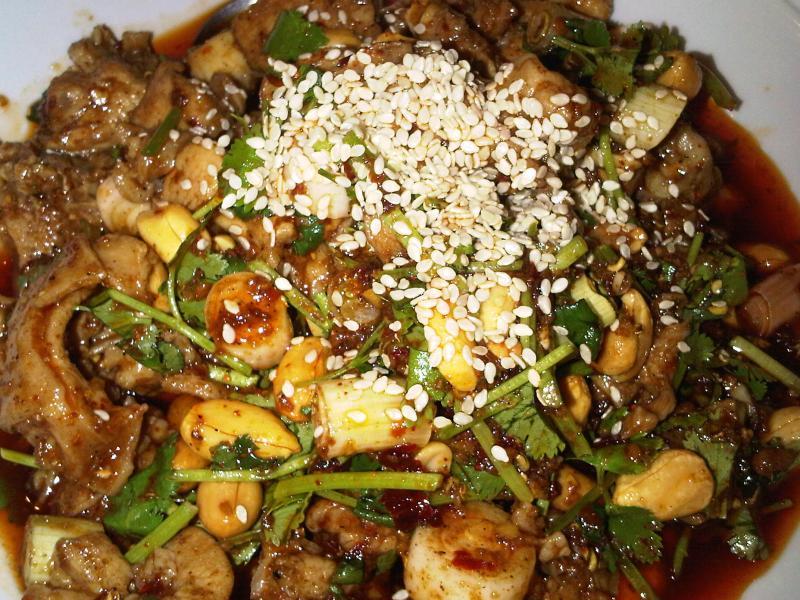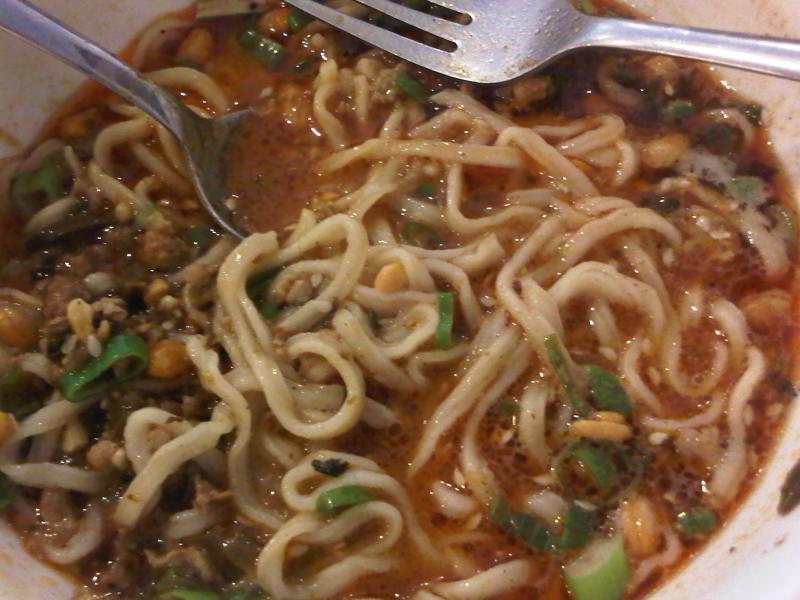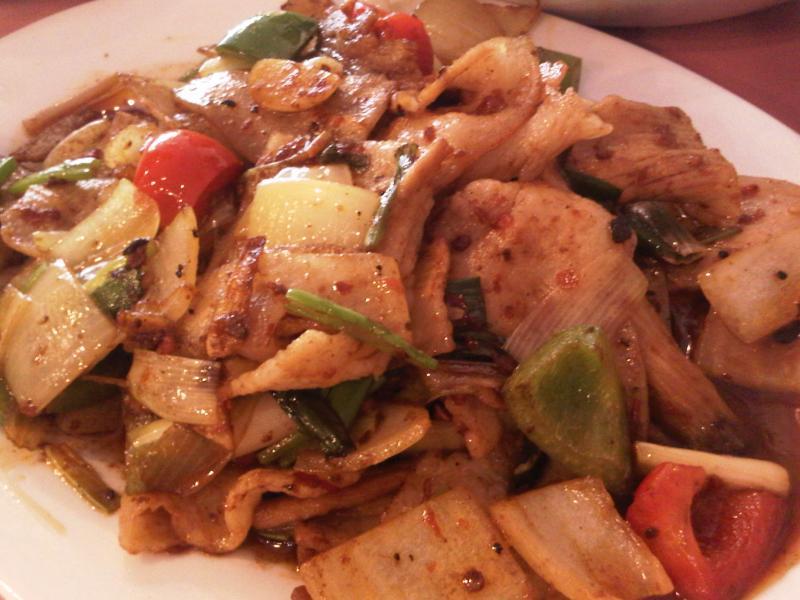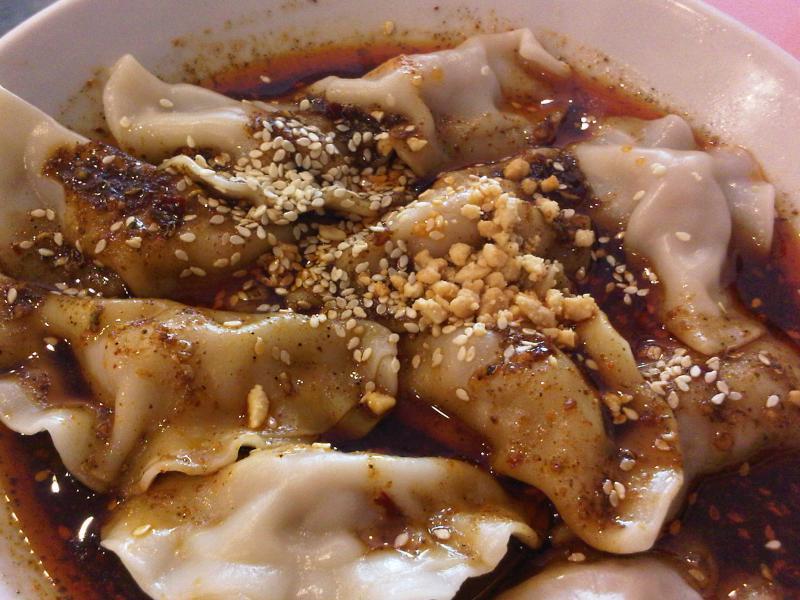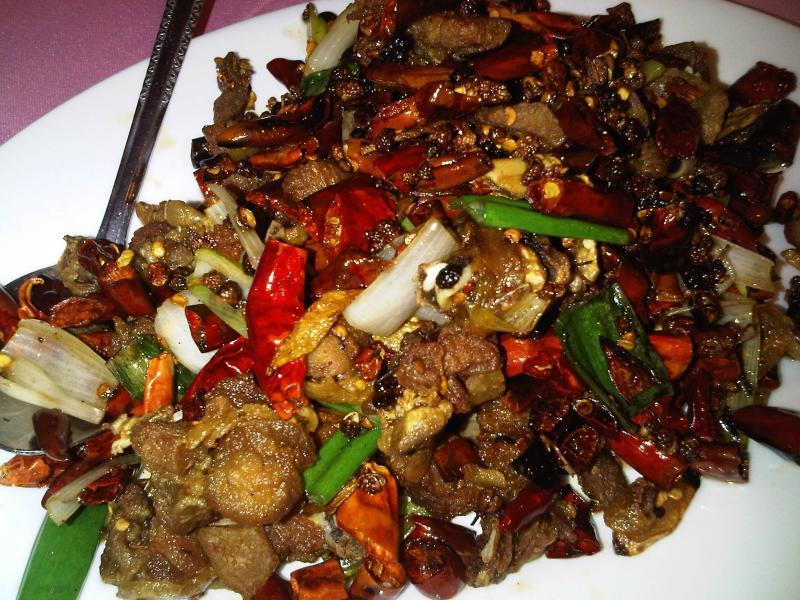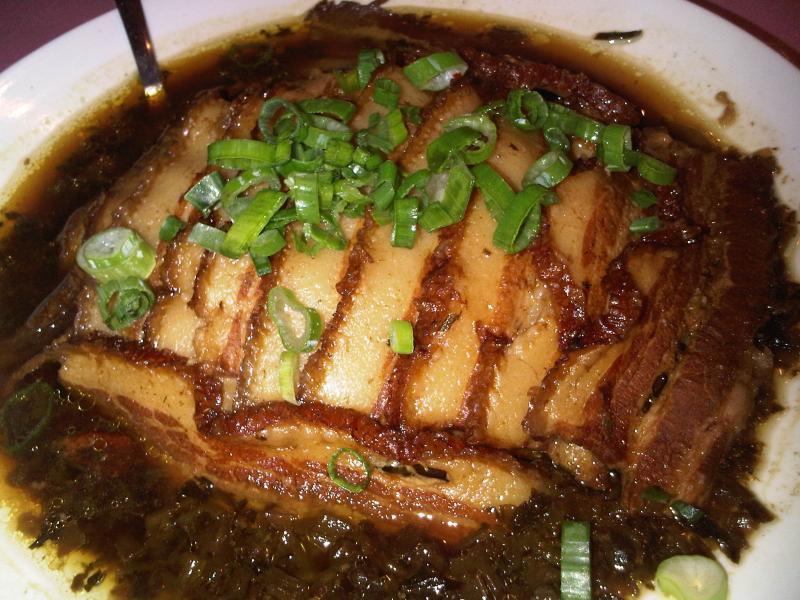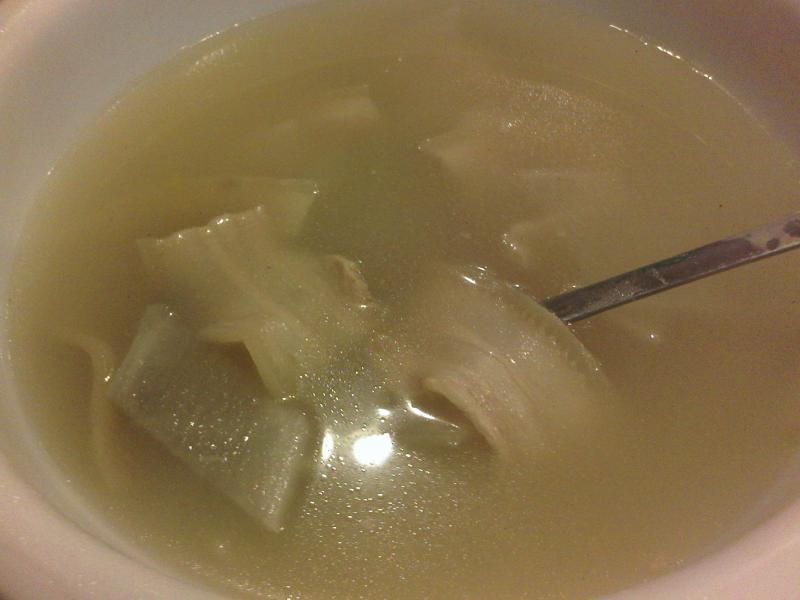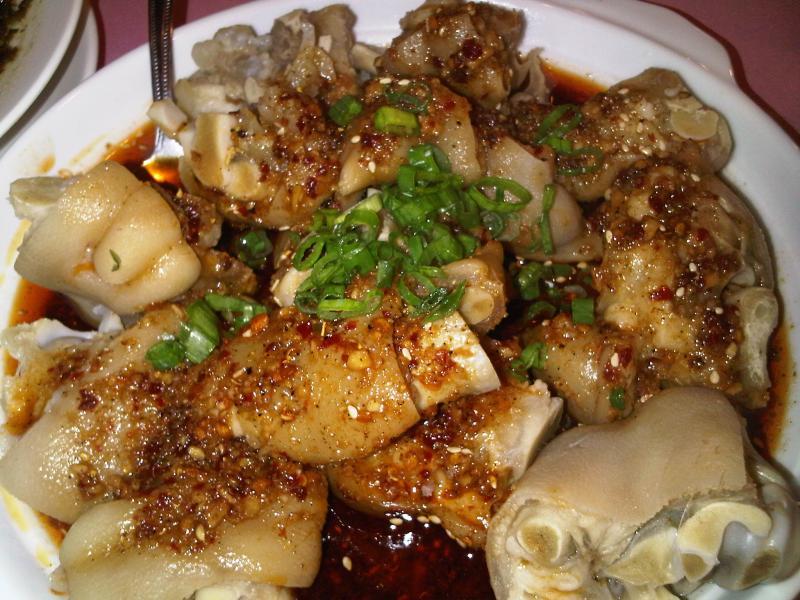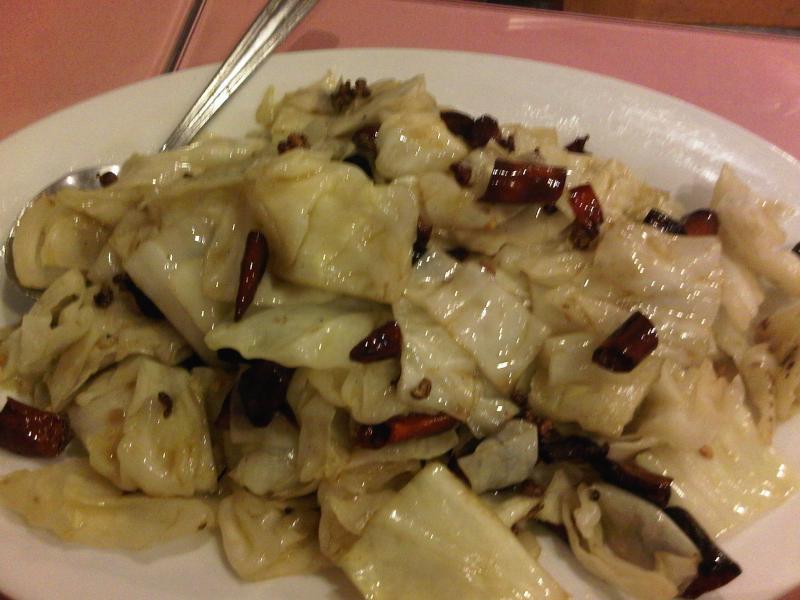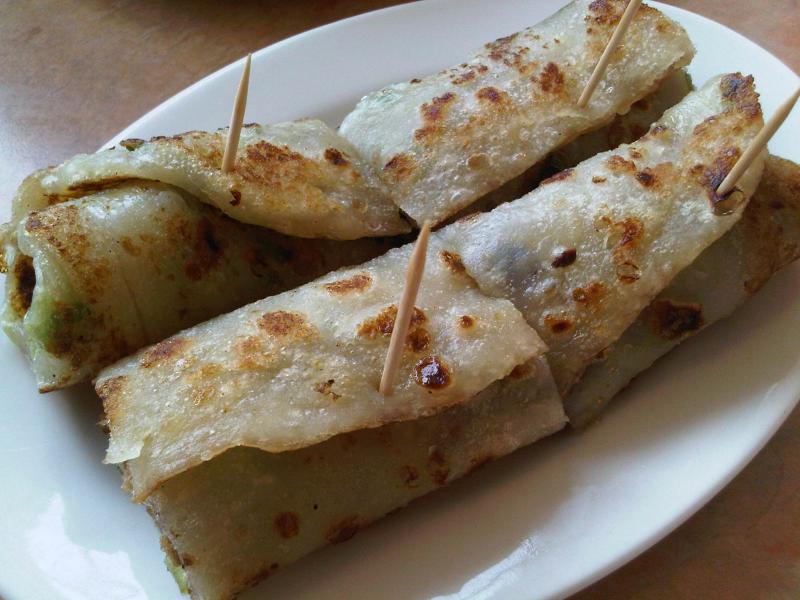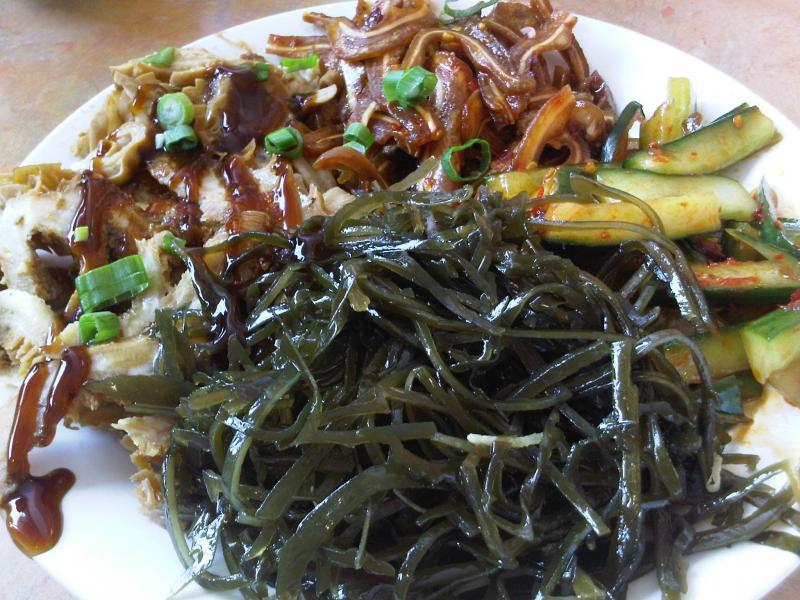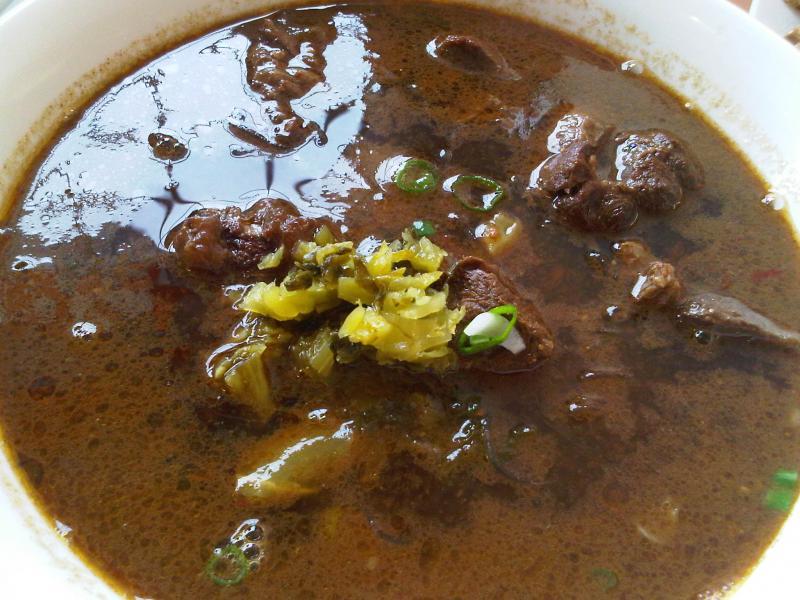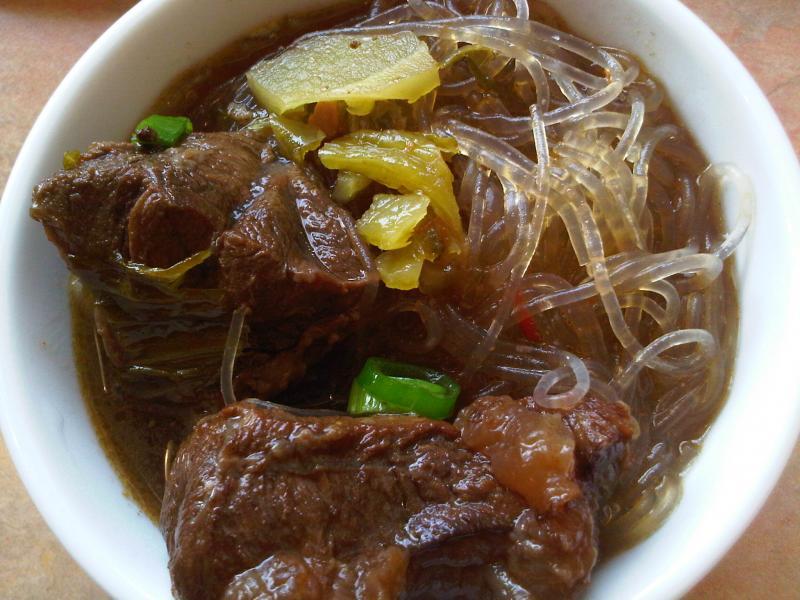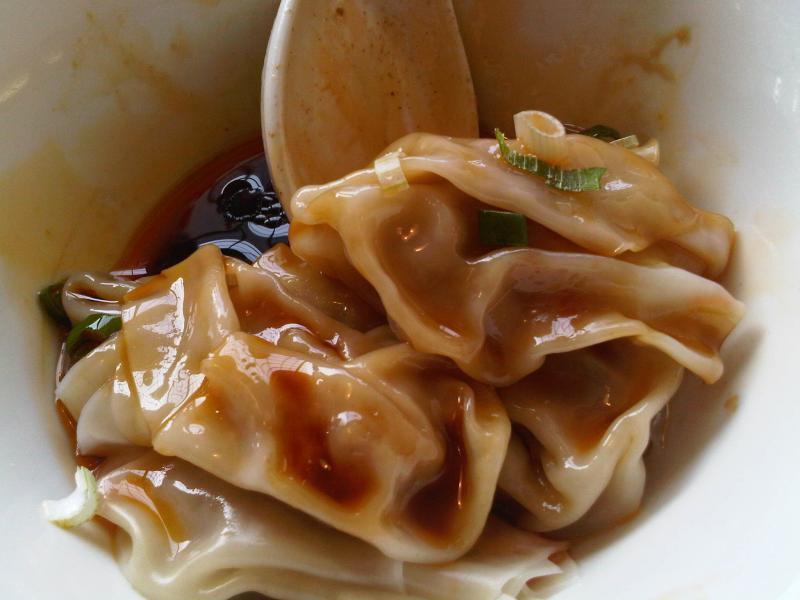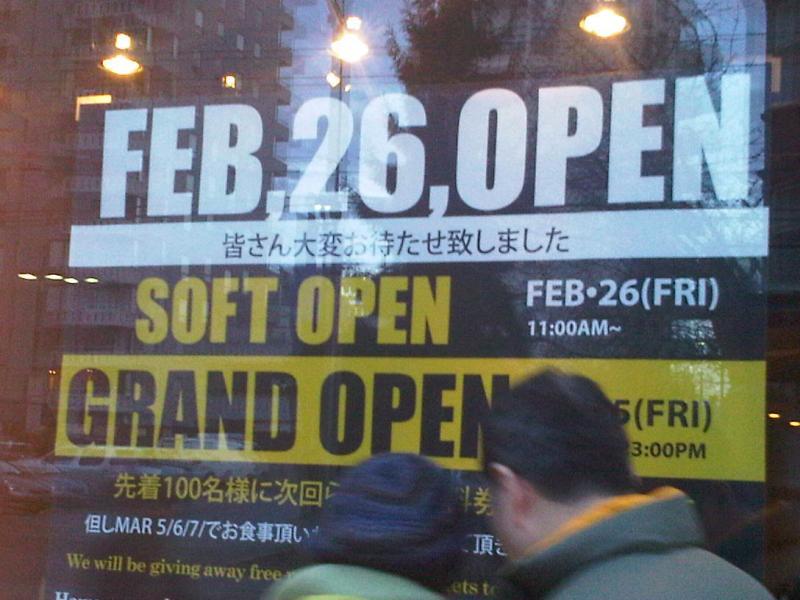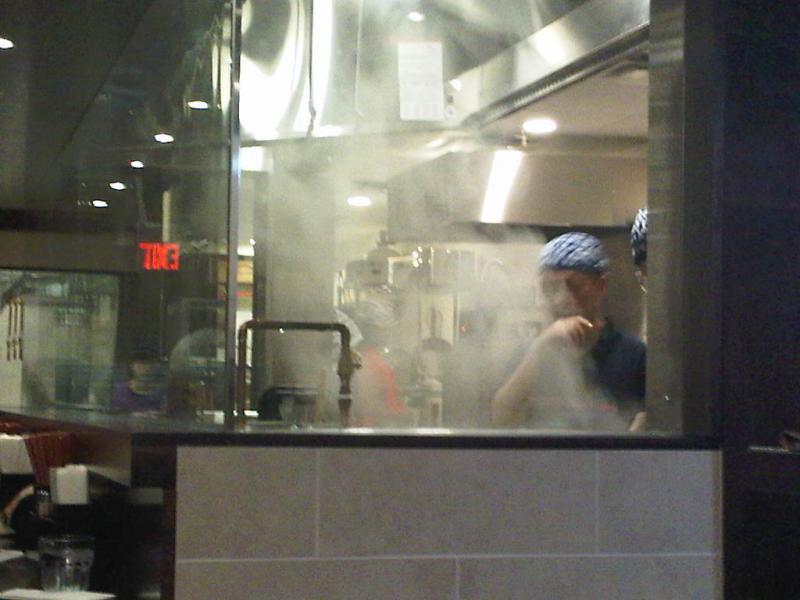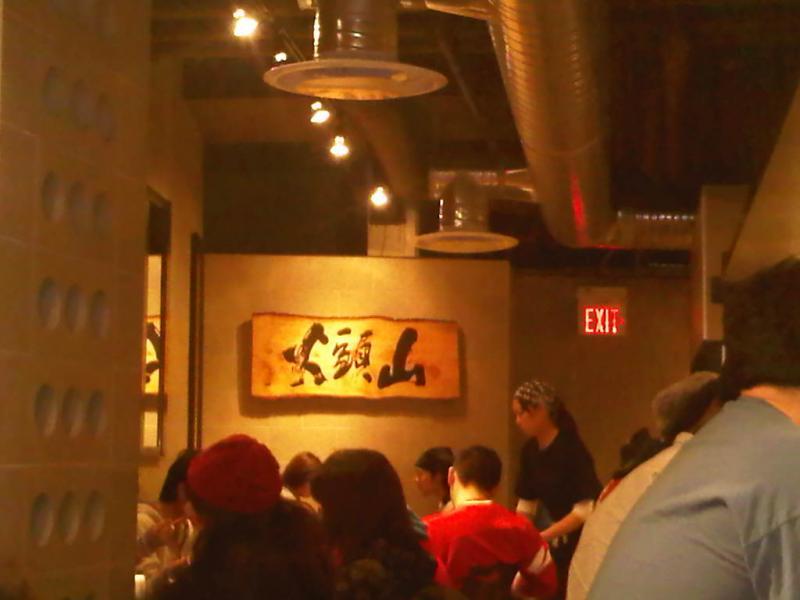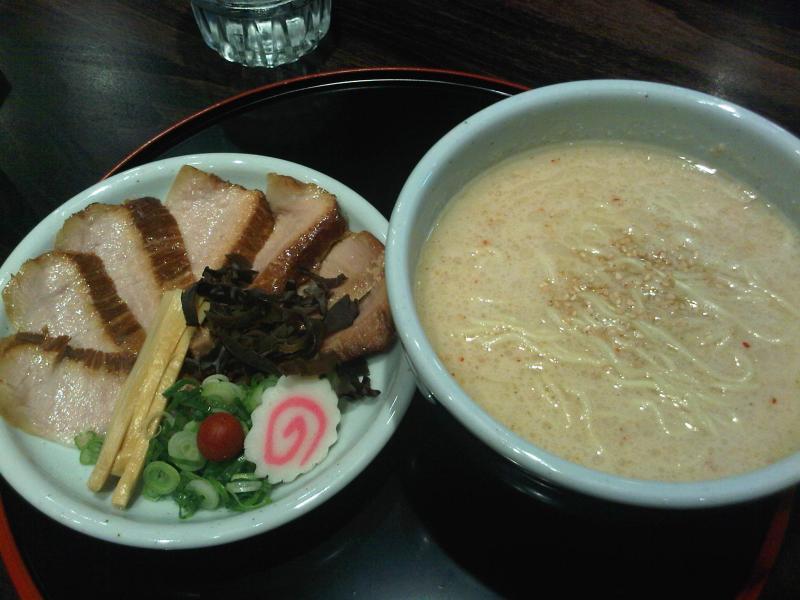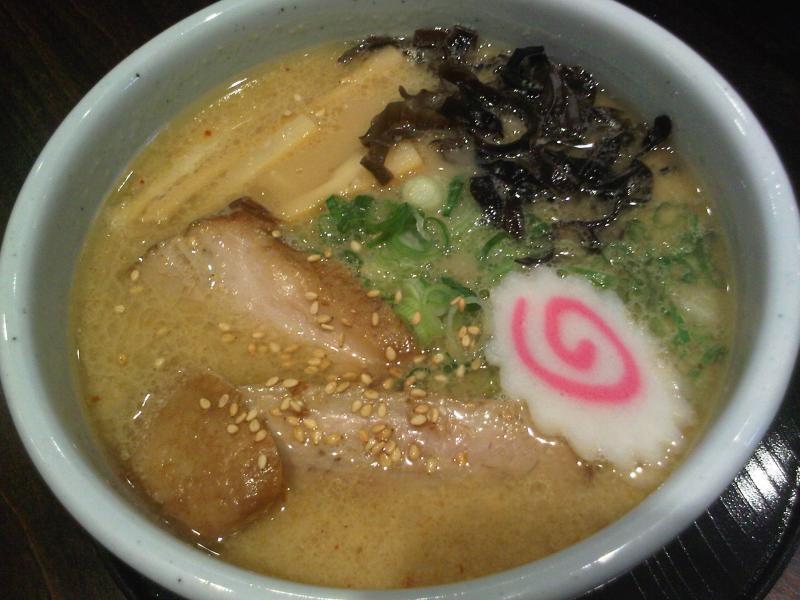
nondual1
participating member-
Posts
98 -
Joined
-
Last visited
Contact Methods
-
Website URL
http://
-
Ramen Sanpachi (ラーメンさんぱち), aka Ramen 38, has opened a franchise on Bute just off Robson, taking over the old Royal Thai location. Sanpachi originates from Sapporo and the ramen it serves seems to be quite true to the Sapporo style. Based on my first visit -- photos to follow -- I like it a lot and will likely consider it my favorite ramen shop in Vancouver. The miso ramen, supposedly Sanpachi's signature bowl, is all right. What really shined for me are the shio and yatai (屋台, or food stall) ramens: the former is rich, smooth and delicately seasoned, whereas the latter is simpler, more traditional and does bring back memories of slurping ramen at food stalls. All the noodles are cooked just right, although their "hang time" seems to be toward the shorter end -- so slurp quickly! But best of all is that the noodles do not have the off taste of soda, which is quite pervalent in other ramen shops that serve this type of noodles! The portion is reasonable for its price ($8.95 and up for a standard bowl, and I think $6.95 for small), which is on par with the price in Japan, but probably higher than the average for Vancouver. Sanpachi apparently is only "soft-open", for most of the items on the menu are still not available. But, among the side-offerings that are, the cha-shu rice and mayo (with cha-shu bits) nori rolls are quite interesting. Service is very friendly, fast and almost too personable (for a ramen-ya). One hopes that's not just because the corporate team (which apparently includes the president 中秀世 himself) from Japan is on site looking over their shoulders. All in all, one of my most satisfying ramen experiences in Vancouver. Although both are based in Hokkaido, the ramen at Sanpachi and Santouka are vastly different in style. I look forward to reading comments from tasters who have tried both. Ramen-hopping, any one? The God of Ramen must be smiling on me, for my dream of a Vancouver Ramen Yokocho (ラーメン横丁) is surely taking shape in the Robson/Denman area!
-
Clotted/ Double Devon Cream in Vancouver
nondual1 posted a topic in Western Canada: Cooking & Baking
Does anyone know where to find Clotted Cream or Double Devonshire Cream in the Vancouver, BC area? The thing one spreads on scones? Any tips will be much appreciated! -
Yeah! That's why I had thought too! Which is why I gave my three suggestions. For example, I would not go to Takumi for anything other than their sushi/sashimi. Conversely, while I am a big fan of Dan, Lime and a few others that have been named, they are really better in areas other than sushi/sashimi such that I don't consider them sushi-ya. And Zakkushi for sushi? I don't know... As for En, I am afraid it's past its prime. But it's nice to go there to pay respect to the old master.
-
Hey, no fair! I thought the list was for Vancouver only! Well, if we are allowed to venture out, then: 1. Hamaei in North Vancouver; 2. Maruwa in Richmond; and 3. Takumi in West Vancouver.
-
This is how positive feedback loops work -- the more people asking for and appreciating authentic dishes, the better the chef will strive for them. If more of us keep up our demand on CXG's authentic Sichuan food, I can see a lot of potential there. Sounds like I'll just have to give it a try next time I go in!
-
Having had, at Mon Bella Bistoria, one of the most sorry and un-inspired meals I ever have to pay for, I too wish him the best of luck.
-
And watch for the big blue sign of Golden Summit Fish Balls. CXG is right behind it.
-
To be honest, I like it too and I am sure many do it that way. But -- forgive me if I'm being too academic or anal-retentive -- it's 豆花麵 (Noodles in Tofu Sauce) that uses fried soybean. It's the interplay of the two soybean products (Oyako Don 親子丼, anyone?) both in terms of their texture and form that makes it interesting. Is it a cardinal sin to switch them around? No.
-
Not to discount your tastes and opinions, but my two-cents: A lot of the items on S&W's menu are not Sichuan. And I find that their "spiciness" is more fiery than numbing; the latter, as well as the complex inter-play of the four flavours (sweet, sour, bitter and spiciness) are the true hallmarks of Sichuan cuisine. The all-out peppery-fire at S&W somewhat makes its dishes a little too one-dimensional to me. Besides, Sichuan cuisine is known for its non-spicy dishes as much as its spicy ones; it's much easier to over-whelm the diners with spicy dishes than to subtly charm and seduce them with non-spicy ones, which a Sichuan chef must do to be worth his salt. As for Golden Spring, it might just be isolated incidents, but on more than one occasions, either myself or my friends did not feel well after dining there. I personally would not be going back, although I am sure others would have better luck.
-
With so many fellow connoisseurs singing its praises, I think it deserves its own thread, don't you think so? From various discussions with him, the chef/owner, a Chengdu native, appears to be very well-trained in Sichuan cuisine and definitely can deliver dishes that are not offered elsewhere. As fmed suggested, if you want and can handle authentic Sichuan flavours, be sure to make your request clear to the kitchen. Although I cannot say all its dishes are the best in the city, its standard is so consistently high and at such reasonable prices (mostly around $10, with very few topping the $20 mark), you cannot go wrong with Chuan Xiang Ge if you appreciate Sichuan cuisine. 1. 怪味雞 Chicken in "Fantastic" Sauce -- Spicy, appetising and addictive; one of the most well-done in the city.
-
Well, you know what you are going to make me do now... Go back to Santouka to try their shoyu ramen! Based on Kuwegg57's suggestion, I went back to Santouka to try their shoyu ramen. Although, as I mentioned in my previous post, Santouka really did not make its name by excelling in the shoyu broth, I was very pleasantly surprised. Whereas in most places, you definitely are tasting the soy in this broth, Santouka's shoyu broth is really more a tonkontsu (thick creamy pork broth) dotted or highlighted with shoyu. Going easy on the shoyu not only lessens the saltiness of the broth, it actually hones and purifies the underlying pork flavour. Santouka's shoyu broth is easily the best of its three broths and most likely one of the best of its kind in Vancouver.
-
When two fellow noodle connoisseurs recommend Tony's Beef Noodle 王哥牛肉麵, going there for a taste was a no-brainer for me. It's very accessible, with lots of street parking around the block, not to mention its being across from the Canada Line station. Despite the less-than-glamorous decor, the place is bright and clean. The service is prompt, warm and efficient. I can confirm DylanK's observations about the meats and the side-dishes/appetisers. As well, the beef wrapped in flat-bread (牛肉卷餅) is among one of the best I've had in Vancouver: excellent texture for both the flat-bread and the beef, not to mention the rich (but not overly salty) flavours. Whereas I didn't have the chance to try the spicy beef noodle, the very respectable wonton in spiced oil (紅油抄手) is a good indication that the noodle ought to be good too. Although the beef broth is a little bland when compared to Chef Hung's, in all other aspects Tony is way better than Chef Hung. And when you throw in the price comparison ($8 a bowl as opposed to $11), one would have to be an idiot to make the wrong choice. Some photos: An assortment of 5 appetisers: seaweed, ox stomach, pork intestine, pork ear, and cucumber. All excellent! Beef noodle (actually green bean thread) soup in big bowl Individual serving of the beef noodle; notice the perfectly-done meats Beef wrapped in flat-bread Wonton in spiced oil Next stop: The place on Oak and 67th!
-
Well, you know what you are going to make me do now... Go back to Santouka to try their shoyu ramen! Googling Ramen Aoba (ラーメン青葉) does show it specializes in shoyu ramen and that it, along with Hachi-ya (蜂屋), is the quintessential ramen-ya of Asahikawa (旭川). But it would also seem that Santouka breaks with the tradition a little by making a name in shio tonkotsu (とんこつ塩らーめん) instead. It's getting complicated...!
-
Santouka (山頭火) Ramen Santouka is "soft-open" since Friday, February 26, 2010 with a limted menu; official grand opening is a week hence, on Friday, March 5. The limited menu includes most ramen; the sets, rice and snacks (including gyoza) will come later. This stylishly-appointed ramen shop features a long common table, several 4-tops and a bar facing the glass-enclosed kitchen. All seats thoughtfully include under-the-table space to tuck away bags and jacket. Sleek and clean -- a harbinger to everything about Santouka -- yet not over-crowding, the atmosphere is an appetising one. The staff is all Japanese delivering the expected energetic service. Prices tend to be on the high side ($8 to $13 for a bowl of ramen), more on par with Motomachi Shokudo than with the other ramen shops. It uses the style of noodles that is lower in egg content and alkaline water, similar to that Meny-ya uses rather than to, for example, Benkei's or Deli Nippon's. This style of noodle is not as springy as the other type and is harder to the bite. Santouka cooks its noodles al dente -- just about right. Since Hokkaido, where Santouka was born, is famous for its miso ramen, we gave it a try. Whereas the miso broth is definitely miso, it is not over-whelmingly so. It is not bland, but neither is it exploding with flavours. It is also a little surprising that it does not include corn, one of the pride produces of Hokkaido. The serving temperature tends to be on the low-end: still hot, but slurping is not de rigueur. An alternative to the more regular ramen is the toroniku ramen. "Toroniku" is the prized neck meat of the hog and Santouka braises it to the point where it literally melts in one's mouth. Of the 3 types of broth (shio, shoyu and miso), we had the shio ("salt") type, which is essentially milky pork-bone broth. It's thick without being oily and over-bearing. Very calming and soothing indeed. All in all, not bad -- however, at these prices, it'd better be! Interestingly, when I compare my pictures with the those taken at other Santouka locations, they look almost the same. Now that cars are "driving machines" and pens are "writing instruments", perhaps the style of Santouka Ramen can be said to be "precision-engineered slurping materials"?

